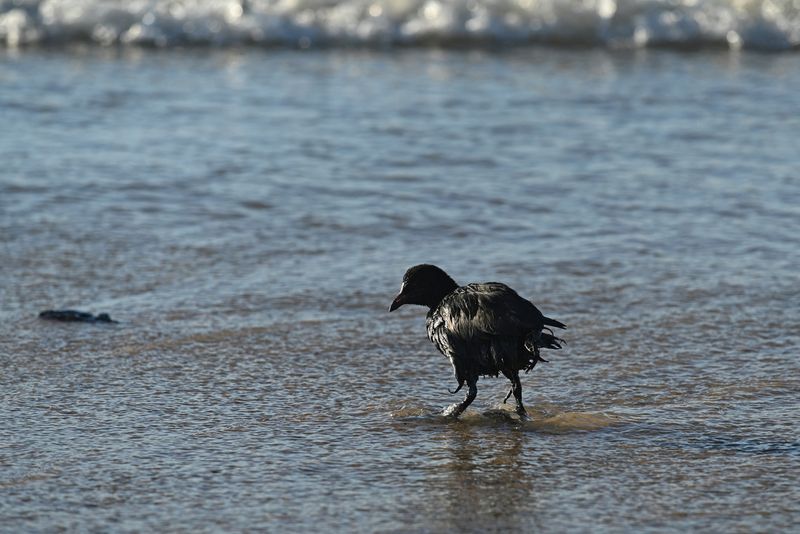By Sergei Pivovarov
VITYAZEVO, Russia (Reuters) – Volunteers struggled to scoop up tonnes of sticky oil from Russia’s Black Sea coast on Friday after what President Vladimir Putin has called an ecological disaster.
The oil leaked from two aging Russian oil tankers that were badly damaged by a weekend storm in the Kerch Strait that separates southern Russia from Crimea, which Moscow annexed from Ukraine in 2014. One of the ships split in two and a crew member was killed. , while the other ran aground.
At the edge of the sea, volunteers shoveled oil and blackened sand into white bags to be carted away into trucks, while more viscous black tar floated in on the waves.
“I’ve never seen anything like this. I can’t even really imagine it. It seems to me that nature will be affected for many decades to come,” said one of the volunteers, a woman who gave her first name Tatiana. .
“Even if you remove the top layer of sand, you step on it and fall through because there is still fuel oil under the sand.”
Volunteers set up a rescue center for stricken seabirds, such as cormorants, who flapped their wings in distress as oil was wiped from their plumage and syringes were used to feed them. The center’s head, Evgeniy Vitishko, said about 500 birds had been treated, but more than 30 had died.
The Kerch Strait is a route for the export of Russian grain and fuel products. The two ships were carrying a total of about 9,200 tons (62,000 barrels) of oil products, of which an estimated 40% leaked into the sea.
On Thursday, one of the ships’ captains was placed in investigative custody for two months and the other was placed under house arrest, both on suspicion of violating maritime safety rules.
The disaster occurred in an area that provides important habitat for seabirds and dolphins. One of the worst affected locations is Anapa, a popular tourist resort known for its golden sandy beaches.

State news agency TASS said the contaminated area included more than 45 hectares of protected nature reserve.
It quoted the Emergency Situations Ministry as saying that 6,000 rescuers and volunteers took part in the cleanup efforts and that more than 3,300 tons of contaminated sand and soil had been collected.


